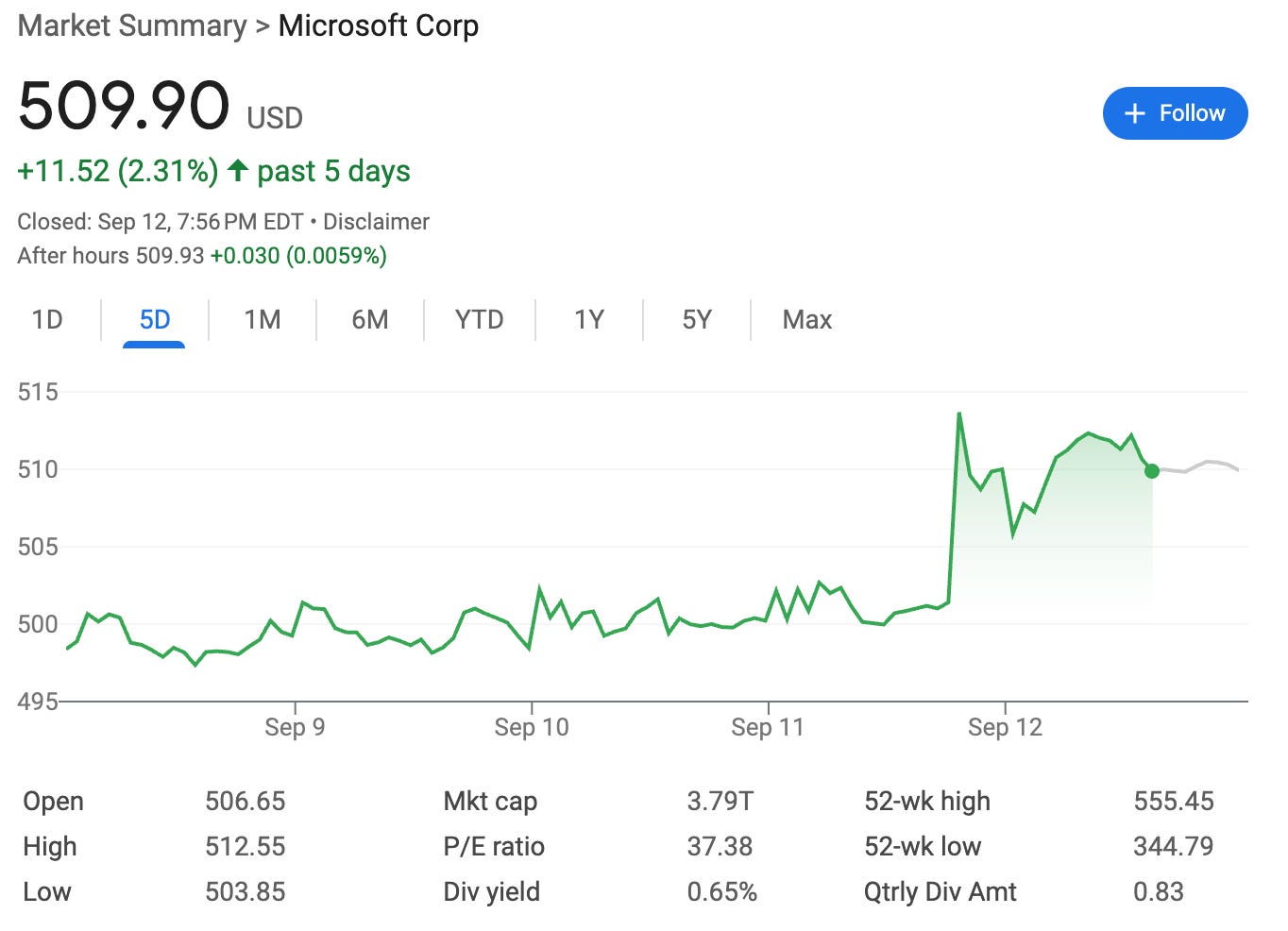Breaking Up Without Letting Go: Microsoft & OpenAI’s Fragile Truce
The messy re-write of tech’s most important partnership and what it signals for AI’s future.
Microsoft and OpenAI issued a terse, 49-word press release last week - a “non-binding memorandum of understanding” about the “next phase” of their partnership. No numbers, no specifics, just an assurance that both sides are “actively working” on final terms.
It was a masterclass in corporate haiku: saying everything and nothing at once. A placeholder for months of bruising negotiations over OpenAI’s for-profit restructuring and eventual IPO.
This nothing-burger was less about substance than timing. In a week where Oracle stole headlines (and posted a historic stock surge) on news of a monster cloud deal with OpenAI, Microsoft wanted to remind investors it’s still the primary beneficiary of OpenAI’s rocket-ship growth. OpenAI, meanwhile, needed to show progress as it negotiates with California and Delaware Attorneys General over its restructuring plan.
Make no mistake: all roads to OpenAI’s restructuring run through Satya Nadella’s office, and he’s been a ruthless negotiator. Here’s what’s rumored to be baked into the not-quite-deal:
Ownership shuffle: WSJ reports that Microsoft and OpenAI will both own about ~30% of the new for-profit entity. OpenAI’s own statement confirms that their new equity stake would exceed $100B - instantly turning it into one of the world’s largest paper philanthropies. This setup addresses advocacy groups’ demands that OpenAI’s nonprofit not be strip-mined, but instead retain a stake large enough to justify the conversion.
Revenue share reset: OpenAI’s cut to Microsoft falls from ~20% today to ~8% by decade’s end. Less cash to Redmond, more fuel for OpenAI’s compute-hungry ambitions.
This only looks like a concession from Microsoft if you miss the actual game they’re playing. The upside case for them isn’t the royalty check from OpenAI - it’s the trillions in enterprise value from embedding OpenAI models into Microsoft’s own products and locking in Azure dominance. As this deal takes shape, they will continue to have:
Privileged access: Early and preferential integration of OpenAI’s frontier models into Office, Windows, and Copilot. Microsoft remains the distribution layer that monetizes OpenAI’s breakthroughs at enterprise scale.
Azure’s gravitational pull: Exclusivity has softened, but Microsoft still has right of first refusal (ROFR) on new compute capacity. That means OpenAI can shop elsewhere (Oracle, Nvidia direct), but Azure gets the first crack. Multi-billion-dollar GPU demand still flows through Microsoft’s 65-70% margin cloud machine.
AGI optionality: Microsoft may retain preferential access to future AGI systems under the new contract. This will be the most explosive clause to finalize with OpenAI eager to slip the yoke and Microsoft unwilling to let the golden goose go. Humanity may not know when AGI arrives, but you can be sure Nadella will be first in line to negotiate a rev-share agreement for it.
Microsoft still retains foundational monetization levers under a new deal… a fact that the market didn’t miss.
At the same time, Nadella is hedging. Anthropic’s Claude models are being tested as part of Office 365 Copilot, alongside OpenAI’s GPT-5. On certain tasks - PowerPoint aesthetics, Excel reliability - Claude outperforms. Microsoft is happy to pay AWS for Claude access, even though it gets GPT-5 essentially free.
This isn’t the first hedge: GitHub Copilot has already incorporated Anthropic for agent-like features. They are also evaluating xAI and their own in-house models for consumer Copilot.
Microsoft is reducing single-source dependency by pragmatically mixing models where performance dictates. It’s a portfolio strategy - not monogamy.
What began as a marriage of convenience is now an open arrangement. OpenAI courts Oracle, Microsoft is talking to Anthropic, and both dress up mistrust as “maturity.” They still need each other - just not exclusively.




